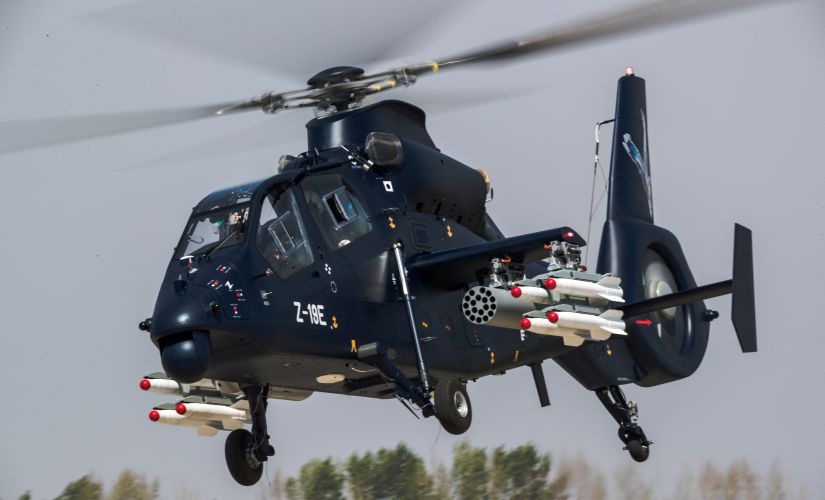New Z-19E Black Whirlwind Flies for First Time in Harbin, China.
Chinese aircraft company AVIC Harbin Aircraft Industry Group debuted its new Z-19E “Black Whirlwind” attack helicopter during its first flight at Harbin Airport in Harbin, Heilongjiang, northeastern China.
The first flight of the Z-19E Black Whirlwind, also referred to as the AH-19E in Chinese media, was a basic lift-off to hover and then several basic low-speed flight maneuvers over the airfield. The aircraft was carrying eight large, white missiles that bear resemblance to the U.S. designed Hellfire guided missile along with what may have been a gun pod and a launch canister for high-velocity aircraft rockets (HVARs) possibly analogous to the U.S. 2.75” folding fin aircraft rocket (FFAR).
The crew arrangement seems to be similar to that of the U.S. AH-64 Apache helicopters where the pilot sits in the rear and the weapons operator sits in the front of the helicopter.
A noteworthy feature of the Z-19E is the “Fenestron” protected, shaft-driven tail rotor assembly. This is different from many attack helicopters such as the U.S. AH-64 Apache, European Tiger and Russian Mi-28 that use conventional, exposed tail rotors mounted outside the fuselage tail boom. The Fenestron enclosed tail rotor reduces lost thrust by ducting the drive forces generated by the rotating blades, reduces audible signature (quieter) and is safer in ground operations.
Fenestron is also noticeably quieter than a conventional external tail rotor improving audible stealth. The most common Fenestron equipped helicopter in use today is the U.S. Coast Guard’s HH-65C Dolphin. Fenestron is also seen on the Russian Kamov Ka-60- and the Kawasaki OH-1 light observation/attack helicopter. Fenestron tail rotors are generally more expensive to manufacture and heavier than a conventional external tail rotor however.
This is China’s first attempt at a locally produced, advanced attack helicopter intended for the export market. Their current primary attack helicopter is the CAIC Z-10 or WZ-10, an indigenously produced attack helicopter of primarily Russian design. It is an older looking helicopter with external tail rotor and cockpit arrangement that resembles the European Tiger attack helicopters. It was originally developed under a secret contract with famous Russian helicopter builder Kamov. The program for the Z-10 began in the early 2000s; an unusually late arrival for China to attack helicopter development compared to the U.S. and Russia who have been building dedicated attack helicopters since the 1960’s.
Depending on cost, capabilities and import/export restrictions the new Chinese Z-19E Black Whirlwind could have interested export clients in African and Middle-eastern/Asian countries where there is no locally built, advanced, fully capable attack helicopter.
Top image credit: Reuters








